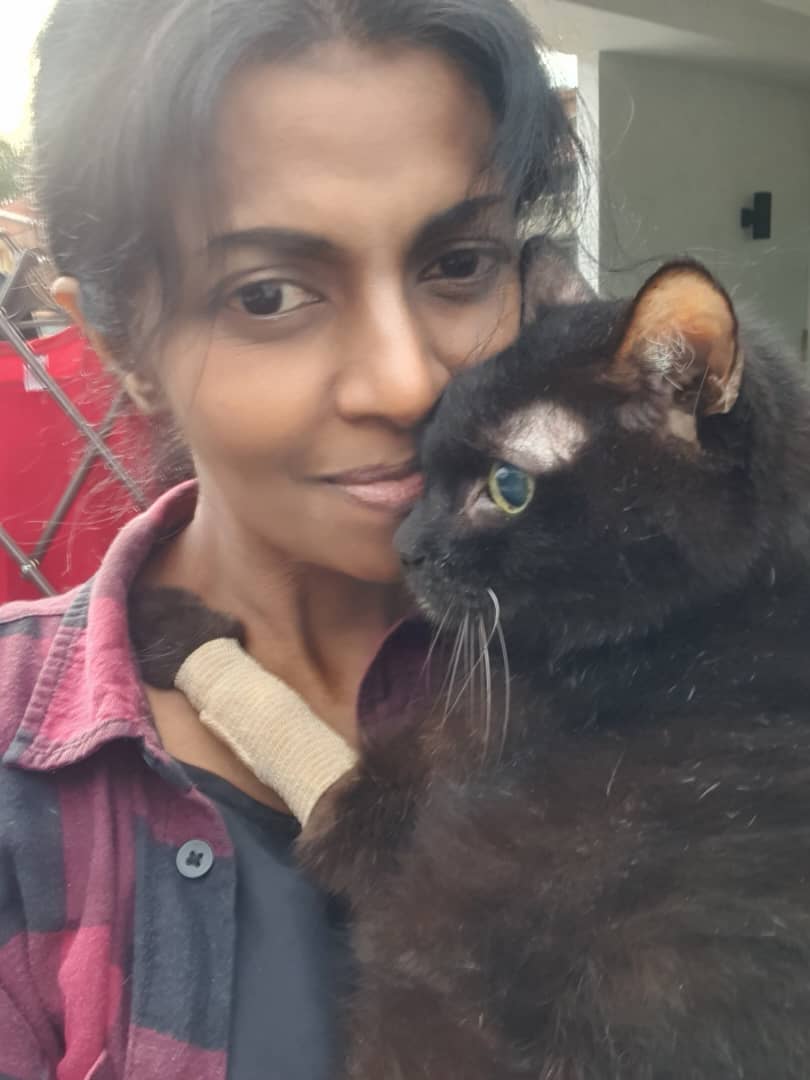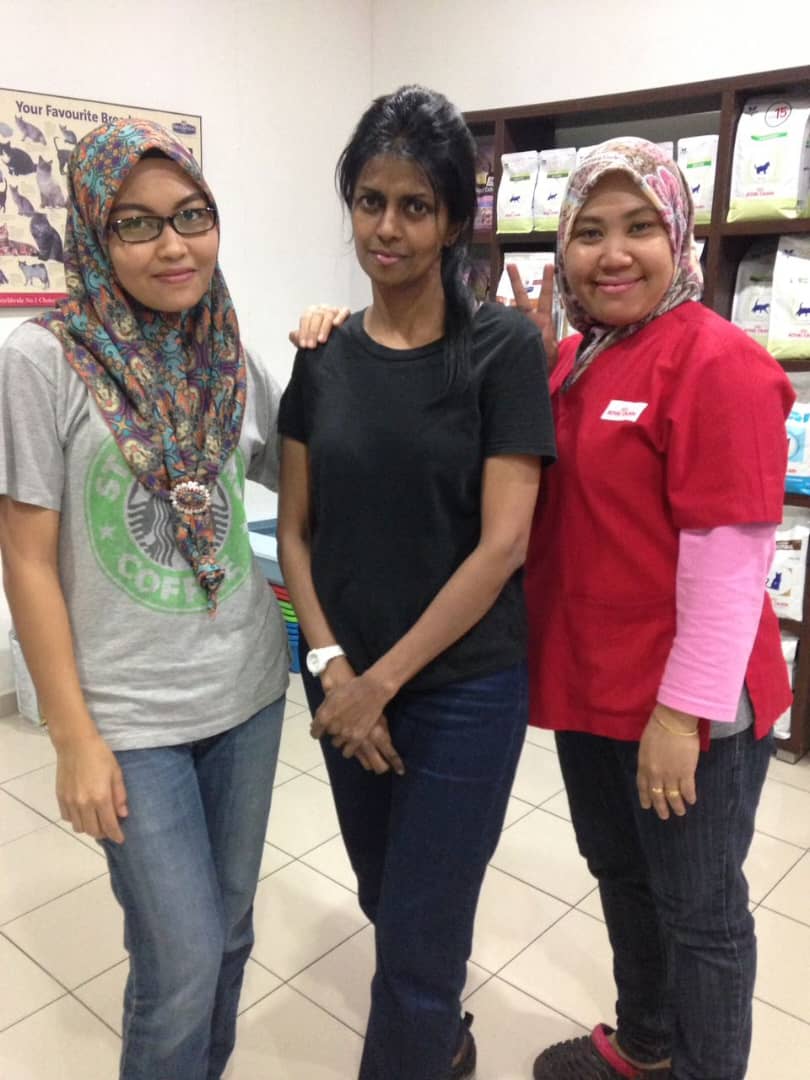Inside the Vet World Part II: Dr Sharon on Finding Her Calling

Munirah Ahmad Niza
October 16, 2025
After more than 30 years in veterinary medicine, Dr Sharon Seetha reflects on her lifelong love for animals, the challenges of vet school, and the rewarding journey of caring for pets with heart and dedication.
- Vet school was intense — long hours, practical training during breaks, and countless species to study, but it was also deeply fulfilling.
- Running a clinic requires both medical expertise and strong leadership in managing people and operations.
- Beyond small-animal care, Malaysia still needs more vets in livestock, research, and public health sectors.
Dr Sharon Seetha graduated with a DVM from UPM and is now a veterinary doctor at Melawati Urban Veterinary Clinic, with over 30 years of experience in veterinary medicine.

From a childhood fascination with animals to the realities of running her own clinic, Dr Sharon shares her wisdom, experiences and heartfelt reflections on life as a small-animal vet.
🐱Haven’t caught part 1 yet? Head over here and give it a read first!
1. First of all, what inspired you to choose veterinary medicine as your field of study?
For me, the spark came when I was about seven years old. My mother would always have National Geographic on TV, and that really nurtured my love for animals.
I was also quite a shy kid, so in my young mind I thought, ‘If I work with animals, I won’t have to deal with people.’ Of course, little did I know that working with small animals also means working closely with their owners too!
2. How was your journey in vet school, and what were the biggest lessons you learned?
Honestly, I loved what I was doing, but vet school was tough. Compared to students from other faculties, we barely had holidays. Most of our semester breaks were filled with practical training. It felt like I was always jumping from one thing to the next, with very little time for myself.
Unlike medical doctors who focus only on humans, we had to learn the anatomy and physiology of countless animals. It was exhausting, but looking back, every bit of that hardship was 100% worthwhile.
3. What made you choose to work in a clinic setting after vet school?
After graduating, one of the clinical heads at the university offered me a position as a clinician at the small-animal clinic. At the time, I actually thought I wanted to go into radiology. But since the opportunity came up, I decided to take it.
That’s really where my interest grew. Over time, I realised how much I enjoyed working with cats and dogs, and that’s how I found myself drawn into the clinic setting.
4. How do you manage the emotional side of working with both animals and their owners?
Whenever I’m treating a client’s pet, I see it as my own. While they’re with me, I give them the same care I would for my own animals.
If I ever feel that a case is beyond what I can do, I don’t hesitate to refer them to a reputable hospital where I know the pet can get the care it needs.
Of course, there are moments that make me sad, but I try not to let it overwhelm me. Most importantly, I take time to speak with the owners, reassure them, and share in what they’re feeling.

5. For vets who aspire to run their own practice, what was the most challenging part of opening your own clinic?
The first challenge, of course, is the medicine itself. Before you even think about opening a clinic, you need to be confident in handling cases and have a solid foundation of knowledge.
These days, new vets usually work a couple of years under mentorship before starting their own practice, and I think that’s a good thing. It helps you build the right skills and confidence.
And once you open a clinic, you’re not just treating animals, you’re also leading a team. Managing staff can be tricky, especially with different generations having different expectations and working styles. You need to learn how to balance what your team needs with what the clinic requires.
That part, I’d say, is just as important as the medicine.
6. What is the most rewarding part of being a veterinarian for you personally?
For me, the most rewarding part is knowing I’m exactly where I’m meant to be. I honestly can’t picture myself as an accountant, a lawyer, or even a medical doctor.
This feels like the right place for me, even after all these years. Of course, the journey hasn’t been easy, but doing what I love makes it all worthwhile.
7. What advice would you give to students who are thinking about vet school but aren’t sure what to expect?
I’d tell them to really think it through, because vet school is a five-year commitment and it takes a lot out of you.
Unlike other courses, where students get proper semester breaks, we usually go straight into practical training. That means early mornings to evenings, with a lot of travelling and very little rest.
The subjects themselves can be tough too. There are so many species to learn, and the exams test you in every way. So your heart really needs to be in it. If you’re passionate, you’ll push through, but you have to be prepared for the sacrifices.
8. In your view, how is the pet care industry in Malaysia evolving, and what opportunities does that create for future vets?
These days, more people are keeping pets, and you can see small animal clinics mushrooming everywhere. On the positive side, it means pet owners have more options and access to care.
But at the same time, it can be challenging for smaller practices to sustain themselves, because when there are too many clinics in the same area, clients naturally get spread out.
However, there’s still a very clear shortage of vets in Malaysia, especially in fields beyond small animal practice, like livestock and public health. So while the pet care industry is growing, there are also many opportunities for future vets to explore different sectors where their expertise is really needed.



